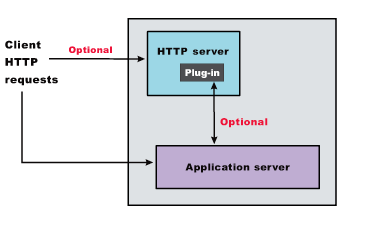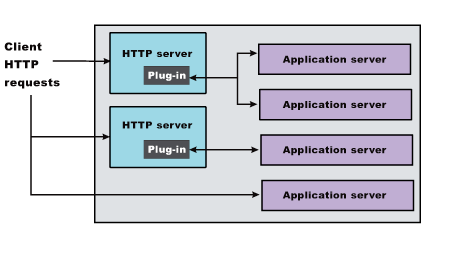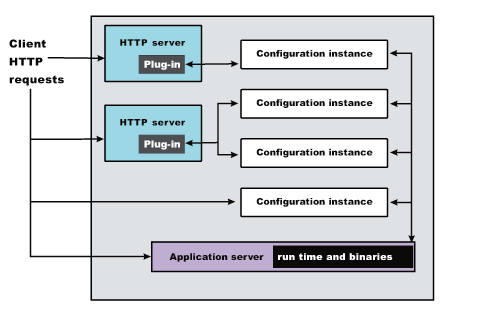![[V5.1 and later]](../../v51x.gif) Single server topology
Single server topology
The following illustrations show examples of single server topologies. Each WebSphere Application Server product can run in a single server environment. The most common topology is a stand-alone base WebSphere Application Server product.

The WebSphere Application Server base product runs on a single machine. You can install the product in a stand-alone configuration or as part of a cell in a multimachine configuration. The stand-alone configuration is typically for developer desktops or stand-alone production computing, which involve a single Application Server instance operating independently of any other applications.
You can install an installation image on any supported machine. You can configure the Application Server with the Administrative Console to host one or more applications.
The Network Deployment product can also run on a stand-alone machine or in a multimachine configuration, as described in other topology topics. The following illustration shows a typical developer environment for a Network Deployment product in a stand-alone configuration. This configuration is not recommended for a production environment unless you have a machine with the capacity for both products.

Multiple instances on one machine
The base WebSphere Application Server product contains three main topologies:
- A single installation, as described previously
- Multiple installations in a coexistence environment
- A single installation with multiple configuration instances
You can install the base WebSphere Application Server product one time as described previously, which creates a default server1 instance.
You can create more servers on a machine using the techniques described in Creating servers in coexistence or multiple instance environments.
You can install the base WebSphere Application Server product multiple times in separate directories. Each resulting installation instance is a fully functional Application Server. The following illustration shows an example of such a configuration.

You can also install the base WebSphere Application Server product one time and use the wsinstance command to create multiple configuration instances. Configuration instances are fully functional Application Servers that share the run time and command binaries of the initial product installation. The following illustration shows an example of such a configuration.


Setting up V5 coexistence
Creating multiple V5 configuration instances